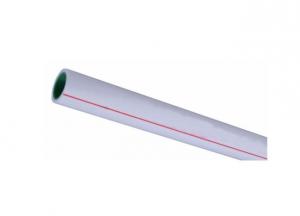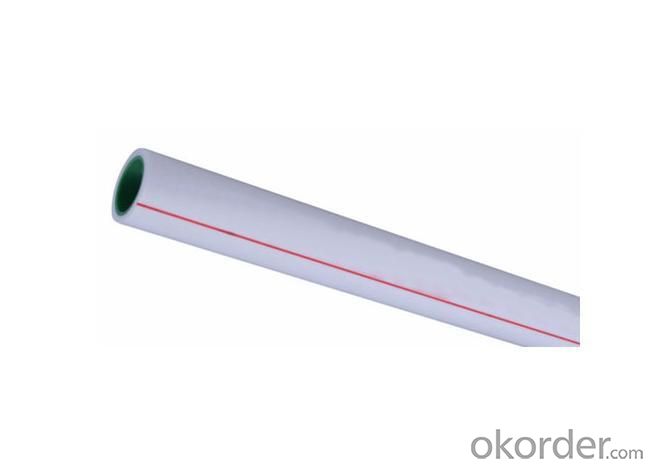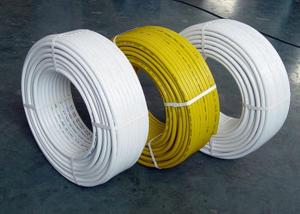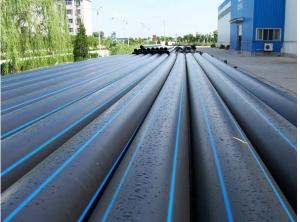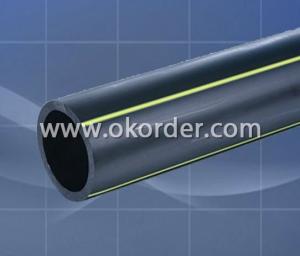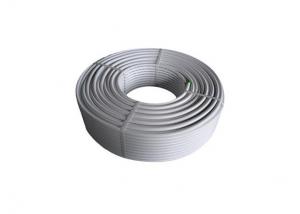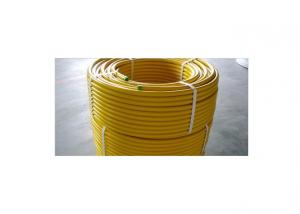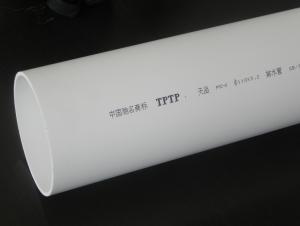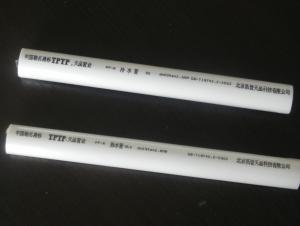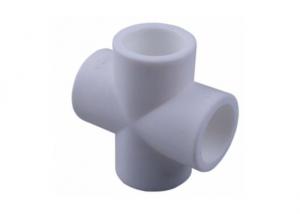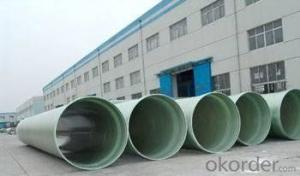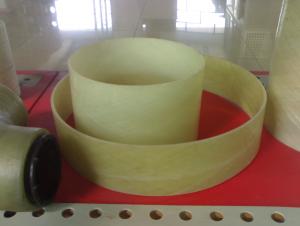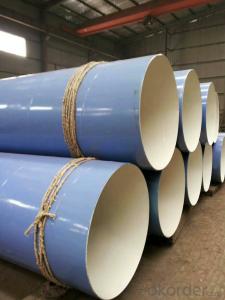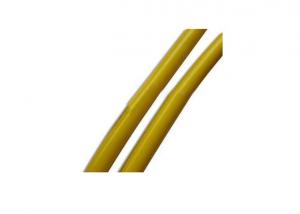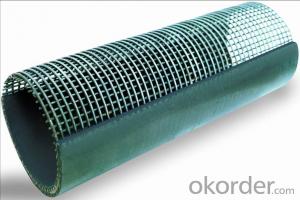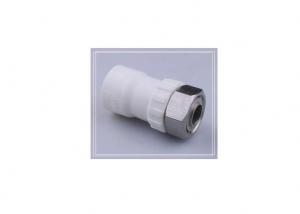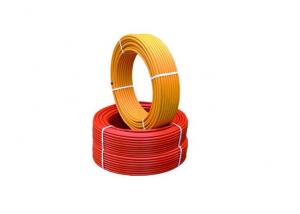Nanomenter Antibacterial PP-R Composite Pipes
- Loading Port:
- China Main Port
- Payment Terms:
- TT or LC
- Min Order Qty:
- 1000 Meters m
- Supply Capability:
- 50000 Meters per Day m/month
OKorder Service Pledge
OKorder Financial Service
You Might Also Like
Nanomenter Antibacterial PP-R Composite PIPE
Certificate: CE; ISO9001
Pressure: PN1.25Mpa; PN1.6Mpa; PN2.0Mpa; PN2.5Mpa
15 years experience in PP-R line
Advantages of Nanomenter Antibacterial PP-R Composite PIPE:
High Temperature Resistance: the maximum sustained working temperature is up to 70 °C,the maximum transient temperature is up to 95°C
Heat Preservation: low thermal conductivity which is only 1/1500 of brass pipe. And 1/250 of steel pipe.
Non-toxic: no heavy metal additives, would not be covered with dirt or contaminated by bacterium.
Corrosion Resistant: resist chemical matters or electron chemical corrosion.
Lower Installation Costs: light weight and ease of installation can reduce installation costs by as much as 50%over metal piping system.
Higher Flow Capacity: smooth interior walls result in lower pressure loss and higher volume than metal pipes.
Long Life: more than 50 years under normal conditions
Recycled and Environment-friendly
PP-R Water Supply Pipe (Wall Thickness/mm):
PN
Outer
Diameter | 1.25 Mpa | 1.6 Mpa | 2.0 Mpa | 2.5 Mpa |
16 | 2 | 2.2 | 2.7 | |
20 | 2 | 2.3 | 2.8 | 3.4 |
25 | 2.3 | 2.8 | 3.5 | 4.2 |
32 | 2.9 | 3.6 | 4.4 | 5.4 |
40 | 3.7 | 4.5 | 5.5 | 6.7 |
50 | 4.6 | 5.6 | 6.9 | 8.3 |
63 | 5.8 | 7.1 | 8.6 | 10.5 |
75 | 6.8 | 8.4 | 10.3 | 12.5 |
90 | 8.2 | 10.1 | 12.3 | 15.0 |
110 | 10 | 12.3 | 15.1 | 18.3 |
160 | 14.6 | 17.9 | 21.9 | 26.6 |
- Q: Can composite pipes be used for transporting drinking water?
- Yes, composite pipes can be used for transporting drinking water. Composite pipes are made of different materials such as fiberglass, PVC, or polyethylene, which are non-toxic and are approved for use in drinking water systems. These pipes are resistant to corrosion, have smooth inner surfaces that prevent scaling and biofilm formation, and are durable, making them suitable for transporting clean and safe drinking water.
- Q: Can composite pipes be used for carbon capture and storage systems?
- Yes, composite pipes can be used for carbon capture and storage systems. Composite materials, such as fiberglass or carbon fiber reinforced polymers, provide excellent corrosion resistance and high strength-to-weight ratio, making them ideal for transporting and storing captured carbon dioxide. Additionally, composite pipes offer design flexibility and can withstand harsh environments, making them a suitable choice for carbon capture and storage applications.
- Q: Can composite pipes be used for steam transportation?
- Yes, composite pipes can be used for steam transportation. Composite pipes are designed to handle high temperatures and pressures, making them suitable for transporting steam. They offer advantages such as corrosion resistance, lightweight construction, and thermal insulation, making them a reliable option for steam transportation applications.
- Q: Can composite pipes be used for underground heating systems?
- Yes, composite pipes can be used for underground heating systems. Composite pipes have excellent resistance to corrosion, making them suitable for underground applications where moisture and soil conditions can cause damage to traditional metal pipes. Additionally, composite pipes are lightweight and flexible, allowing for easy installation and reducing labor costs. Overall, composite pipes offer a durable and cost-effective solution for underground heating systems.
- Q: Are composite pipes resistant to alkali degradation?
- Yes, composite pipes are generally resistant to alkali degradation. Composite materials, such as fiberglass, carbon fiber, or reinforced polymers, have excellent chemical resistance properties and are typically unaffected or have minimal degradation when exposed to alkali solutions. However, the specific resistance may vary depending on the type of composite material used and the concentration and temperature of the alkali solution. It is always recommended to consult the manufacturer or supplier for detailed information on the compatibility of composite pipes with alkali solutions in specific applications.
- Q: Do composite pipes have a higher resistance to fatigue failure compared to metal pipes?
- Yes, composite pipes generally have a higher resistance to fatigue failure compared to metal pipes. This is because composite materials, such as fiberglass or carbon fiber, are inherently more flexible and have higher strength-to-weight ratios than metals. Additionally, composites are less susceptible to corrosion and have better resistance to chemical and environmental degradation, further enhancing their fatigue resistance.
- Q: What is the difference between the PPR aluminium plastic composite pipe and the steady pipe?
- The alloy aluminum layer of the PPR aluminum plastic composite pipe is close to the inner wall of the pipe and can be directly heated by heat;PPR alloy aluminum alloy pipe is close to the outer wall of the pipe, and then the aluminum layer should be removed.
- Q: Are composite pipes suitable for bridge construction?
- Yes, composite pipes are suitable for bridge construction. Composite pipes offer numerous advantages such as high strength-to-weight ratio, corrosion resistance, and durability, making them an excellent choice for supporting infrastructure like bridges. Additionally, composite pipes can be customized to meet specific project requirements, making them a versatile option for bridge construction.
- Q: How do composite pipes handle seismic activity?
- Composite pipes are designed to handle seismic activity effectively due to their inherent flexibility and strength. The composite materials used in their construction, such as fiberglass or carbon fiber, have excellent resistance to bending and impact. This allows the pipes to flex and absorb the energy generated during seismic events, minimizing the risk of damage or rupture. Additionally, composite pipes are lightweight, which reduces their inertia and makes them less prone to being dislodged or displaced during an earthquake. Overall, the combination of flexibility, strength, and lightness of composite pipes makes them a reliable and durable choice for withstanding seismic activity.
- Q: Are composite pipes suitable for agricultural irrigation?
- Yes, composite pipes are suitable for agricultural irrigation. Composite pipes, made from materials like fiberglass or carbon fiber, offer several advantages such as high strength, corrosion resistance, and durability. These properties make them ideal for withstanding harsh agricultural environments, including exposure to chemicals, sunlight, and varying temperatures. Composite pipes also have smooth inner surfaces, reducing friction and improving water flow efficiency. Additionally, their lightweight nature makes installation and maintenance easier, reducing labor and costs. Overall, composite pipes are a reliable and long-lasting solution for agricultural irrigation systems.
1. Manufacturer Overview
| Location | Zhejiang, China |
| Year Established | 2004 |
| Annual Output Value | |
| Main Markets | North America South America Eastern Europe Southeast Asia Africa Oceania Mid East Eastern Asia Western Europe |
| Company Certifications | CE;ISO9001:2000 |
2. Manufacturer Certificates
| a) Certification Name | |
| Range | |
| Reference | |
| Validity Period |
3. Manufacturer Capability
| a) Trade Capacity | |
| Nearest Port | |
| Export Percentage | 31% - 40% |
| No.of Employees in Trade Department | |
| Language Spoken: | |
| b) Factory Information | |
| Factory Size: | 10,000-30,000 square meters |
| No. of Production Lines | 6 |
| Contract Manufacturing | OEM Service Offered Buyer Label Offered |
| Product Price Range | |
Send your message to us
Nanomenter Antibacterial PP-R Composite Pipes
- Loading Port:
- China Main Port
- Payment Terms:
- TT or LC
- Min Order Qty:
- 1000 Meters m
- Supply Capability:
- 50000 Meters per Day m/month
OKorder Service Pledge
OKorder Financial Service
Similar products
Hot products
Hot Searches
Related keywords
